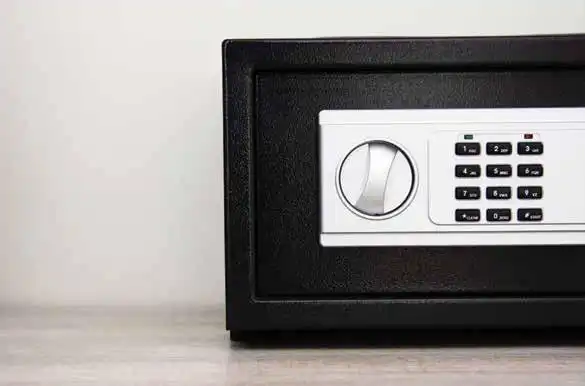
3 minute read
How Safe is your Home?
from Cambs Feb 2022
by Villager Mag
Home
Security
Advertisement
How safe is your home?
The ways in which we protect our homes have changed over the past decade. From CCTV systems, wireless doorbell cameras, automatic lighting, motion sensors, anti-vandal paint to good oldfashioned burglar alarms, the list of home security gadgets available is endless. But just how safe is your home? Last year alone there were more than 260,000 cases of home burglary in the UK, the majority of which were conducted by amateur thieves, and although your chances of crossing paths with Thomas Crown are quite slim, statistics show that your home is five times more likely to be targeted if no visible security measures are in place.
How do I know if my home is secure?
It is every homeowner’s worse nightmare: being woken up in the middle of the night by strange noises coming from downstairs, or coming home from an evening with friends to find a smashed window panel and a door left slightly ajar. With an understanding of basic theft prevention and an assessment of your property’s security, you will be in a better position than most to know if improvements are urgently needed in your home to protect your family.
Keep valuables out of sight
That new flatscreen TV looks great on your wall, but did you know it can be seen from the street? Removing all valuables from an outside viewpoint gives thieves no reason to target your property. This includes car keys, smart devices, bags, wallets and of course jewellery. Even the packaging of expensive items shouldn’t be left outside as this acts as an advertisement to would-be thieves.
Check for vulnerable entry points
Are your doors reinforced uPVC plastic or solid wood? Forcing entry to a doorway is the most common tactic for burglars to enter your property. Ensure all entrance points are secured with suitable locking mechanisms in place. Windowless doors with a minimum of two locks are the most efficient.
Keep sheds and garages secure
Thieves will often enter a rear garden to obtain tools from a shed or garage as they are easily accessible, with many homeowners not locking them at all. Never give an intruder the opportunity to use your own belongings against you.
Think like a thief
Attempt to gain access to your own home without using a key. Is the rear garden fence easily scaled?
Can you gain access to the top windows by climbing the drainpipe? Do the doors and windows move slightly if you force them? Understanding your home’s weaknesses will help you to understand what improvements are needed.
Don’t make it easy for them
If you lose your house keys, replace the locks immediately. There is always a chance that your keys will be found by someone who knows you or can follow you home. You should never leave house keys under the doormat or flowerpot; this is the first place intruders will check when trying to gain access.
The most effective methods for protecting your home
Under lock and key – the simplest solutions are always the most effective. Over 70% of home intruders gain access to properties by entering the front door. Always ensure it remains locked, along with all other entrances, windows, gates and garages. Let there be light – outdoor security lighting on timers or infrared motion sensors are a low-cost solution for deterring would-be intruders. Make sure you focus on dimly lit areas, which are hotspots for attacks, muggings and altercations with criminals who can take possession of your house or car keys. Smile for the camera – an alternative option to a full CCTV system without breaking the bank is a wireless doorbell camera. Burglars tend to knock on the front door before entering a property, to check if anyone is at home. With a door camera you will naturally deter intruders, be able to see who is knocking on your smart device and have the added benefit of recording their face should future evidence be required. Home and away – the longer a house is uninhabited the more vulnerable it becomes. Use automatic lighting and timers for electronic devices to come on in the evenings, to give the illusion that your house remains occupied. Play it safe – if all of the above fails and an intruder has managed to enter your property, fear not. With a simple safe box your goods stand a better chance of remaining in your home. Fixing your safe securely in place in a hidden spot is the tried and tested method for preventing thieves escaping with your valuables.












